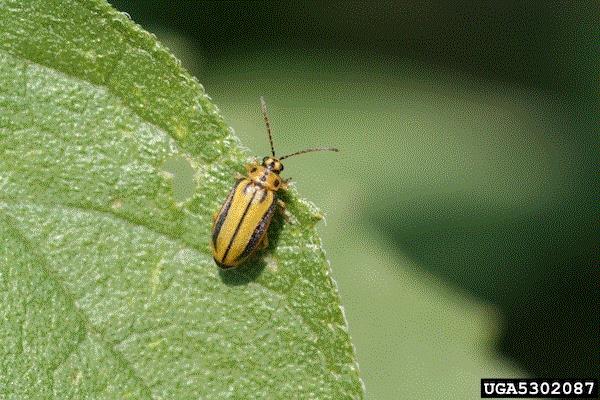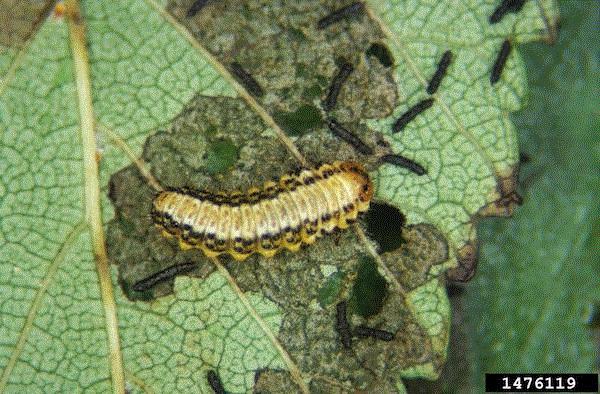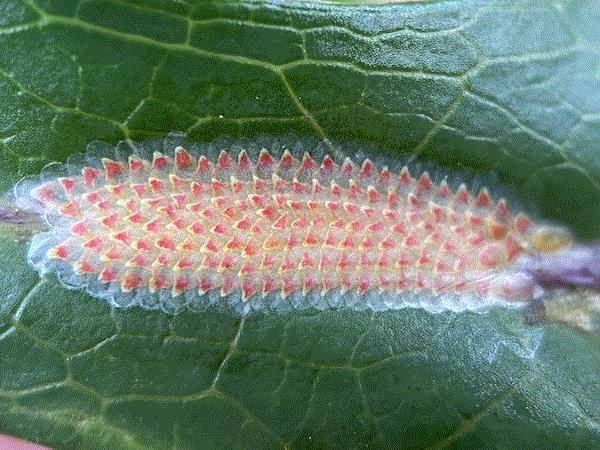Box Tree Moth Found in NY Landscape
Several of you reached out to me about box tree moth after reading last month’s newsletter. Jan wrote from Canada asking how much trapping was done around the Niagara Falls area. Jan was concerned about the spread of this invasive species and rightfully so—adult moths can just fly or be blown right across the narrow Niagara River, which is just a man-made demarcation of two political entities that means nothing to a bug of international renown.
At the time, I couldn’t tell Jan where, when and how many moths had been trapped in the border area; I simply don't have the information. But relevant information surfaced within a day of my reply to Jan.
The New York Department of Agriculture and Markets announced that five adult moths had been collected in traps in Niagara County in July, and caterpillars had been found in a residential landscape in Youngstown, New York, on August 6. Youngstown is right on the bank of the Niagara River and less than five miles from St. Catharines, made famous as the home city of a nursery that shipped infested boxwood plants to the United States in May. The source of the infestation in the residential landscape in Youngstown was not determined at this time, but it’s not hard to imagine adult moths been blown across the narrow river.
Does this mean we've lost the beachhead and doomed to lose boxwood as one of our landscape plants over time? I hope not. There are still quite a few things we can do to deny box tree moth a foothold. Halting importation in the short term and figuring out a way to ensure clean plants when importation is to resume over time are good starts. Federal and state plant inspectors and regulators are on high alert, and everyone can help with the regulators’ detection work by reporting any suspicious infestation and cooperating with eradication efforts.
Familiarize yourself with the creature so that you can identify them by watching this webinar.

Fall Armyworm Outbreaks
Another caterpillar species is causing quite a bit of stir among entomologists. This has been a year of fall armyworm outbreaks in several states. My colleagues in Georgia, Maryland, North Carolina, Ohio and other states had sent out alerts about severe outbreaks. It even caught the attention of national news outlets.
This year’s outbreak is certainly one of the worst I’ve seen in South Carolina in the past five years. It happened earlier than usual, deteriorated fast and has been very damaging. Grass was just gone almost overnight! The superintendent of this golf course in Florence, South Carolina, woke up one weekend morning and found his mounds completely denuded.

There are going to be some unhappy golfers and one irritated golf course superintendent. (Photo credit: Dru Clarke, Florence Country Club.)
Did recent storms make fall armyworm infestations worse across the Northeast and Midwest because the pest was pushed north by recent storms, as reported by CBS based on the blog by Dave “the Bug Doc” Shetlar, Joe Boggs and Curtis Young? There’s truth to that.
Remember tobacco budworm that I mentioned several issues ago? Tobacco budworm cannot survive the harsh winter in the North, so infestations in the North have to be initiated by moths migrating from the South every year. So do fall armyworm. They maintain permanent populations in southern Florida, southern Texas and countries south of the land and sea borders. They slowly migrate north as summer progresses and temperatures rise. The northward migration is sped up and infestation made worse when lots of adult moths are picked up by storms and carried north.

Fall armyworms pupate in the soil under the sod. (Photo credit: Milling Blalock, Corbin Turf.)
Long-distance movement and migration isn't enough—serious outbreaks also depend on one condition: the population has to do well in the South so that many moths are available to move north on their own or by catching a ride on storm fronts. Recent hot and wet months in the South mean plenty of grasses for the fall armyworms to munch on, get fat and strong, and build up a huge population.
Can I say this is a perfect storm?

Elm Leaf Beetle Making a Comeback?
Are you seeing more elm leaf beetles this summer? Joe Boggs of The Ohio State University noticed an outbreak on trees in downtown Cincinnati and asked this question.
Whitney Cranshaw of Colorado State University made a very interesting observation. After a 25-year hiatus, elm leaf beetle appears to be making a resurgence in some areas in eastern Colorado and steady increases in the Northern Front Range since 2018. The population has been sustained steadily in southeastern Colorado, noticeably in the Arkansas River Valley area. Whitney has a great factsheet on biology and management against this pest (click HERE).

An adult elm leaf beetle. (Photo credit: Whitney Cranshaw, Colorado State University; bugwood.org.)
Do you also see more and more elm leaf beetles? Email me (by clicking HERE) and let me know!
Truth be told, I never really paid much attention to elm leaf beetle before, well, simply because elm trees aren't particularly common in South Carolina. It's certainly not with the same prominence as in the towns and cities of the Midwest.

An elm leaf beetle larva. (Photo credit: Whitney Cranshaw, Colorado State University; bugwood.org.)
I looked into elm leaf beetle and tried to learn more about it. Elm leaf beetle is native to southern Europe and was introduced to the United States around 1838. (Always thought they were native.) It can now be found anywhere elm trees are grown. It feeds on native and introduced elm species (and zelkova, too), but seems to prefer American, Chinese, English and Siberian elms.
Both adults and larvae feed on leaves so, understandably, they can cause serious damage on the health and look of elm trees. You can often find pupating larvae and pupae at the base of an infected tree. (What an odd behavior!) Adults can also become a nuisance invader of homes in the fall.
Great to learn something new everyday!

Fungicide Rotation Webinar
A webinar on disease management will be available free from GrowerTalks’ on September 8 (tomorrow!) at 1:00 p.m. Eastern Time/noon Central.
Emma Lookabaugh and Kimberly Noffke of BASF will team up and deliver a webinar on “Building Better Rotation Programs for Troublesome Diseases.” Emma and Kimberly will talk about the basics of proper and effective fungicide selection, including topics such as modes of action, contract vs. translaminar, application timing, etc. They'll also teach you how to build fungicide rotation programs. Diseases to be covered include various root, crown and foliar diseases, such as black root rot, Pythium, Phytophthora, powdery mildew, Cercospora, Anthracnose and Botrytis.
The webinar is sponsored by BASF. Registration is free. Register for the webinar by clicking HERE.
A Day in JC's Bug World ...
… can be strikingly beautiful! Even though I have no idea what this little beauty is.
I received a picture in late June, via three women (Jordan, Paula and Vicky—thanks, ladies!) of a beautiful set of … fish scales on a leaf? As the bug guy, I have to think entomologically. I thought it might be an egg mass of a moth in the family Tortricidae. I guess that's because it looks very similar to the egg mass of the omnivorous leafroller, which I have a “colony” in the greenhouse. (“Colony” implies some effort in maintaining the population. The fact is, I brought some infested mums into my greenhouse about eight years ago and the moths stay to this day without any effort on my part.)

Beautiful little egg mass. (Photo credit: Bea Leiderman.)
I solicited help to identify the egg mass from my colleagues and there were several guesses: obliquebanded leafroller, some cambrid moth species, jewel caterpillar, and crown slug caterpillar. Each one of these species is fascinating. (You can find their information and pictures online. I highly recommend checking out the jewel caterpillar and crown slug caterpillar.) Can you believe such beautiful insects exist in the world?
The picture didn't come with the plant's name, but it came with the locality of Ireland at first. My ego thought, “Janey Mac! You are world famous!” But ensuing emails revealed that the egg mass was from Rockwood Park in Chesterfield County, Virginia. Not quite Ireland, but I’ll still take it to nurse my ego!




See y'all later!

JC Chong
Professor of Entomology at Clemson University
This e-mail received by 26,766 subscribers like you!
If you're interested in advertising on PestTalks contact Kim Brown ASAP!